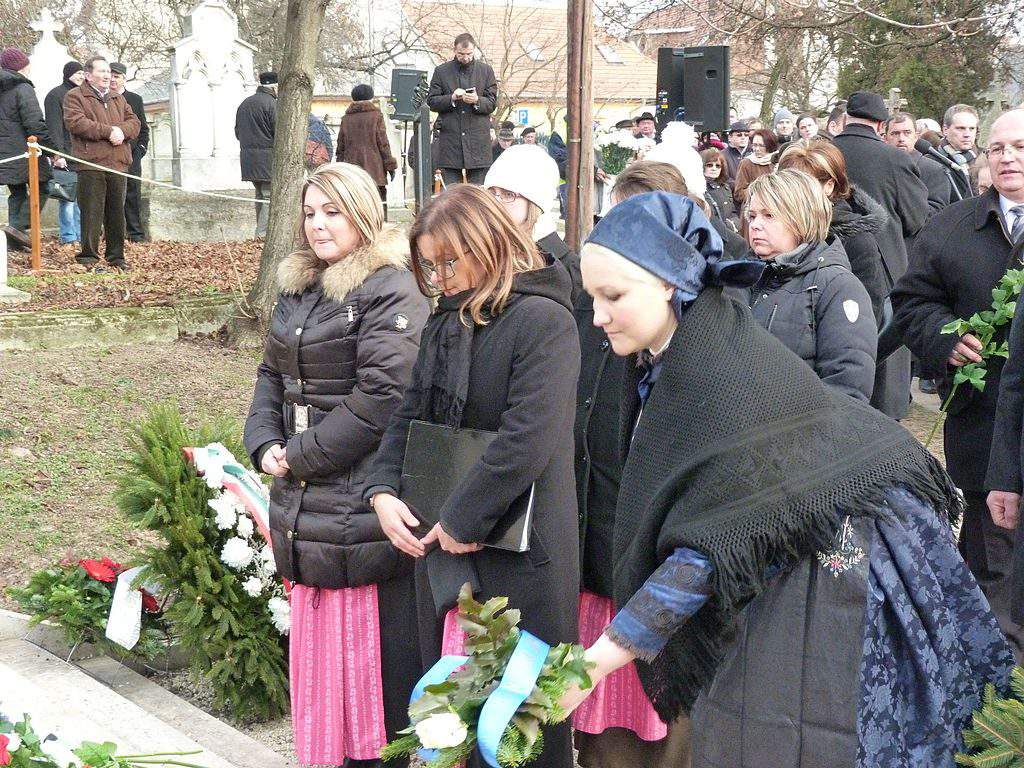Minorities in Hungary #3 – Germans

The close relation of Hungary and the German-speaking countries can be observed from Saint Stephen I through both World Wars to today’s economic and diplomatic connections; but did you know that Germans shaped Hungary also from within its borders? The ancestors of Germans living in Hungary today arrived at the country in different historical periods and migration waves. Multiple factors formed the German minority’s fate and characteristics.
According to the respective Sulinet page, the settling of the Germans began in the former Roman province, Pannonia, around Lake Balaton. Settlers from the empire could only secure the territories conquered by the Franks during the time of Charles and Pippin. Bavarians were being settled from 750.
After the Bavarian army lost the Battle of Pozsony (Bratislava) against the Magyars in 907, written sources did not mention Germans in Hungary for 50 years. Saint Stephen I was crowned as king of Hungary in 1000. He was the first Christian king of the country as bishop Pilgrim baptised him. He intended to open towards the West and lead Hungary into Catholicism. He married Bavarian princess Gizella, sister of Emperor Henry II. This meant an abolition of Paganism and a closer relation to the Germanic people. He needed Western help to convert the entire country, so he called for German priests and knights.
However, the greatest number of German immigrants did not come in the medieval times but after the liberation of Hungary from the Ottoman rule.
The foreign rule and the constant warfare destroyed many settlements of the occupied territories, mostly in the South. The rich meadows became swampy marshes.
The coat of arms of Germans in Hungary. Photo: Wikimedia CommonsThe first step in rebuilding the country was to regain the fertility of the lands. Landowners did their best to get labour force to work on their fields. The population of the Holy Roman Empire seemed to be splendid for this task. The Thirty Years War and the feudal tyranny increased the longing of Germans to leave their home country, so great masses of them could be recruited by the agents of the Hungarian landlords.
The settling was executed in three stages.
The first one was initiated by Charles III (1689-1740). This was the time when great numbers of German peasants came to Transdanubia, the Great Plains and the North Hungarian Mountains, but they also appeared in Bácska and Bánság. A Schwab centre was also established in Szatmár County. The second stage occurred during the rule of Maria Theresa. The main reason was economic: the court competed the landowners by providing extra support for German settlers on the labour market. These new settlers mostly populated the southern borderlands. Joseph II’s declaration in 1782 initiated the third and the last stage. These Germans settled in the South and the counties of Pest, Esztergom, Vas, Tolna and Somogy.
The skills of the settlers were exploited well, and the landlords of Szatmár and Upper Tisza created a prospering economy. The marshes of Nera Valley were made fertile again by the Schwab wine-growers. The Germans also participated in establishing Hungary’s metal industry near Miskolc and Resicabánya.
Though the German settlers did not speak Hungarian at first, they developed a so-called “Hungarus identity” quite early.
They were loyal to Hungary, and they thought that the common history connects them with Hungarians, despite the different languages.
As the settlers did not come from a single area, they did not make a homogeneous group, and they spoke different dialects, as Nyest.hu highlighted. Most of them had a Central or Southern German dialect as their mother lounge, and these were slowly mixed into a Hungarian creole. This mixed language was very different from the standard “Hochdeutsch”. Germans living in Hungary use the opposition of voiced and voiceless consonants much less often than the native speakers of standard German.
In 1919, Mihály Károlyi’s government granted autonomy for the German minority. All the Germanic people were treated as one united nation. In settlements with significant German presence, autonomic practices were introduced in education, culture and religion. They had a representative body in Hungarian legislation based on their population rate. The era of German municipals had begun.
However, dark times arrived for the Germans in Hungary after World War II: in 1945, almost half of them were deported or even transported to the Soviet Union for forced labor in the name of collective guilt.
That is the reason why only 2.5 percent of Hungary’s population remains German today. This means 200,000-220,000 people. Due to the dismissal of village communities and industrialisation, the number of mixed marriages grew, which further decreased the number of native German speakers in Hungary.

Most of the Germans are bilingual, switching between German and Hungarian depending on the context and the company.
Though the language is becoming extinct within the borders, the German culture has been increasing in Hungary since the 1980s: it was the time when the first German association (Nikolaus Lenau Kulturverein) was founded, followed by 6 national and 79 county associations. The German theatre in Szekszárd (Deutsche Bühne) was also opened, not to mention the several German-language schools.
All the settlements with German presence are in close relation with their sister towns in Germany and Austria.
This means that some classes spend two weeks each year in a sister school in one of those countries. The presence of the Germans is also significant in economy and industry, as many settlements (e.g. Mór, Bóly, Szederkény) rely on the international connections of the minority.
The Minority Law still allows them to elect their own representatives. Germans in Hungary have founded 164 minority municipals altogether. They keep on playing a vital role in Hungary’s cultural life and technological development.
Photo: Fortepan
Source: Sulinet.hu, Afoldgomb.hu, Nyest.hu, Daily News Hungary





